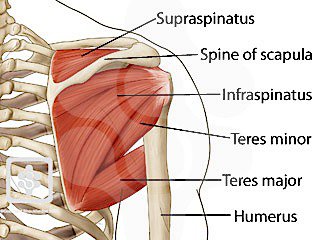Blog
Shoulder Pain
Tags: natural pain relief, pain management, pain relief, physical therapist Prescott, physical therapists Prescott, Prescott physical therapy, shoulder pain, shoulder pain relief
Shoulder pain is a common complaint that affects a large segment of the population at any given time. If you’ve experienced a fall where you caught yourself with an outstretched arm and noticed immediate shoulder pain, you may have a rotator cuff tear. If your shoulder is weak, you have difficulty sleeping because of shoulder pain, and you are over 60 years of age, there is a good possibility you have a rotator cuff tear. If this is the case get your shoulder checked out. You can have a tear and rehabilitate the shoulder to the point that you’re symptom free. If the tear is larger though, it may be a better option to have it fixed via surgical repair.
If you’re less than 60 years old and your shoulder pain was not caused by trauma (a fall, car accident, etc.) there is a good chance you do NOT have a rotator cuff tear.
If you have shoulder pain without a rotator cuff tear your best bet is to rehabilitate the shoulder. When people think about rehabilitating the shoulder they often think about doing exercises to strengthen the rotator cuff muscles.

The rotator cuff muscles may or may not need strengthening. Either way, only working on the rotator cuff muscles will not alleviate shoulder pain. These muscles are small and not especially strong to begin with, they are not used to move the arm through large ranges of motion. The rotator cuff muscles primary function is to hold the head of the humerus (upper arm bone) snug against your scapula (shoulder-blade) during arm movements. The rotator cuff keeps the shoulder joint stable yet mobile, allowing you to do everything from throwing a ball to writing. So the rotator cuff muscles kind of fine tune movement and help stabilize the shoulder joint. Keeping these muscles strong is important and beneficial, but when you have shoulder pain these muscles are not the only ones that need work
The muscle that attach from your spine to your shoulder-blade and from your rib cage to your shoulder-blade often need work as well.  When you raise your arm overhead 1/3 of the motion comes from the shoulder-blade moving upward on the rib cage. If the shoulder-blade sits too much in a downward position or the shoulder-blade does not rotate upward enough when you raise your arm overhead, your shoulder is going to start hurting. Strengthening the rotator cuff muscles for a year won’t change how the shoulder-blade moves on the rib cage. You have to address the muscles that make this happen, and the rotator cuff muscles don’t move the scapula on the thorax.
When you raise your arm overhead 1/3 of the motion comes from the shoulder-blade moving upward on the rib cage. If the shoulder-blade sits too much in a downward position or the shoulder-blade does not rotate upward enough when you raise your arm overhead, your shoulder is going to start hurting. Strengthening the rotator cuff muscles for a year won’t change how the shoulder-blade moves on the rib cage. You have to address the muscles that make this happen, and the rotator cuff muscles don’t move the scapula on the thorax.
Another area that often needs to be addressed if you have shoulder pain is the spine. Particularly the area of the spine that is between your shoulder blades. This part of the spine is called the thoracic spine. The thoracic spine often becomes stiff and tight. When it does, the shoulder blades are not able to move upward optimally. If the thoracic spine is stiff and you are trying to paint a ceiling or change out light bulbs, basically doing anything with your arms overhead repeatedly, you will probably experience some shoulder pain.
Tight muscles on the front of your trunk can become tight or stiff, primarily the pectorals major and minor muscles. If stiff or tight, these muscles pull the shoulders forward. When in a forward position the arm does not move optimally, especially when raising it above shoulder level.
Many times people who have shoulder pain have all three of these things going on at once, week periscapular muscles (muscles that attach from spine to shoulder-blade), a stiff thoracic spine (mid back), and tight anterior trunk muscles (tight chest muscles). If all three of these areas are not addressed properly shoulder pain may persist. It’s common for people to address one or two of these areas that become impaired but they usually don’t address all three. To be free of shoulder pain all three of these regions have to be addressed.
Here are three simple, effective drills to eliminate shoulder pain.
Thoracic rotation self mobilization: 10 times each direction
Shoulder elevation on all fours: 10-15 times
Complete these exercises 3-4 times a day for the next 3-4 weeks. Look forward to having at the very least less shoulder pain, and possibly no shoulder pain.